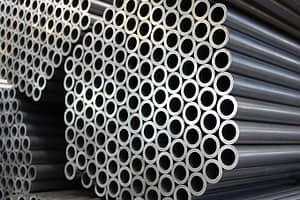+91-79045 61980 | Located in Chennai, TN
Mechanical Tests performed on the finished Seamless Hydraulic Pipes and Tubes
- Tensile Test
The tensile test is a mechanical testing method used to measure the strength and ductility of a material. It involves applying a tensile force to a sample of the material until it breaks, and measuring the force required to break the sample and the extent to which it deforms.
- Hydrostatic pressure Test
The hydrostatic pressure test is a mechanical testing method used to evaluate the ability of a material to withstand high pressures. It involves applying a hydraulic pressure to a sample of the material until it fails, and measuring the pressure at which the sample fails.
- Eddy Current Test
The eddy current test is a non-destructive testing method used to detect defects in conductive materials. It involves passing an alternating current through the material and measuring the resistance to the flow of current, which can indicate the presence of defects.
- Flattening, Flaring, Bending Test
The flattening, flaring, and bending tests are mechanical testing methods used to evaluate the formability of a material. These tests involve applying a force to a sample of the material to see how it deforms and measuring the amount of force required to deform the sample.
- Surface roughness Test
The surface roughness test is a measurement of the roughness of a surface, typically using a specialized instrument such as a profilometer. This test is used to evaluate the finish of a surface and ensure that it meets certain quality standards.
- Hardness Test
The hardness test is a mechanical testing method used to evaluate the resistance of a material to deformation. It involves applying a force to a sample of the material and measuring the depth of the indentation left by the force.
- Burst Test
The burst test is a mechanical testing method used to evaluate the ability of a material to withstand high pressures. It involves applying a hydraulic pressure to a sample of the material until it fails, and measuring the pressure at which the sample fails.
- Salt spray Test to test Phosphating/Plating
The salt spray test is a corrosion testing method that involves exposing a sample of the material to a simulated saltwater environment to evaluate its resistance to corrosion.
- Chemical Composition
The chemical composition test is a measurement of the elemental composition of a material, typically using techniques such as spectroscopy or X-ray fluorescence.
- Metallurgical & Stereo Microscopy
The metallurgical and stereo microscopy tests are methods of examining the microstructure of a material, typically using techniques such as microscopy or metallography.
- Dimensional Checks
The dimensional checks are measurements of the dimensions of a product, such as length, width, and thickness, to ensure that they meet certain quality standards.

